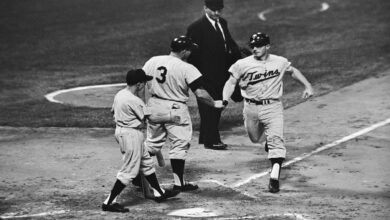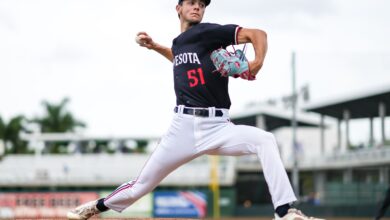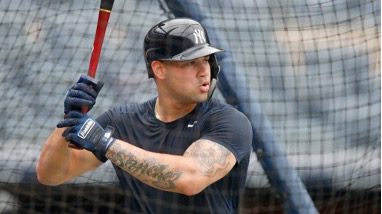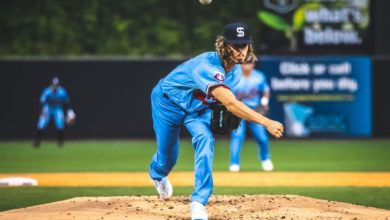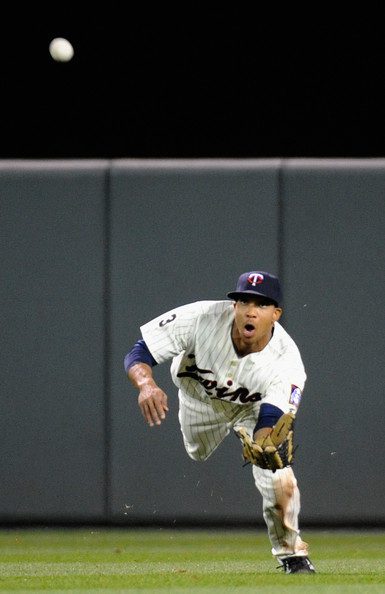

Ben Revere ingratiated himself with the Minnesota fan base in the midst of the team’s disappointing 2011. His insertion into the everyday lineup roughly coincided with the Twins’ best stretch of play. His acrobatics in the outfield, killer smile and all-out hustle were welcome sights on a team that simply looked like it had given up by June. I, however, was skeptical about his value as a long-term starter. Looks like the Twins were, too, as they essentially replaced Revere on the opening day roster with Chris Parmelee, despite Parmelee’s very mediocre minor league track record. As Parmelee struggled, the Twins have decided to give Revere a second chance and, thus far, he’s made the most of it.
Playing mostly right field (despite an arm that turns green with envy every time Johnny Damon three-hops the cutoff man and legitimate 20-grade power), Revere has been worth 2.2 fWAR. That number ranks him 4th among Twins position players and prorated to 650 PA (a full season) puts him at 5.2 WAR, behind only monsters Josh Willingham and Joe Mauer. For reference, only 24 position players bested that total last season. It’s star territory.
However, nobody above where Revere would slot on that list put up as little value with the bat as Revere. He’s gotten about half of his WAR total from this year, from a massive +12.1 UZR score, that ranks third among players with at least 250 PA this year. While UZR isn’t terribly accurate in such a small sample, I think that Revere (though he could use some work on his routes) passes the sniff test as a fielder. He’s truly got incredible range anywhere you put him in the outfield.
While Revere was coming up through the minors, the player he was most often compared to was Juan Pierre. While that was often meant as a knock, a way to show Revere wasn’t a potential star, it appears to be quite apt at this point. Pierre’s career .296/.345/.363 line and .321 wOBA are eerily similar to the .311/.344/.366 slash and .323 wOBA that Revere owns for this season. Their low walk and strikeout totals match almost exactly as well.
Pierre’s production appears to be the ceiling for Revere’s offensive skill set. He doesn’t have enough power to draw many walks, as pitchers will simply throw him meatballs if they’re behind in the count, knowing he’ll rarely end up with anything more than a single. Additionally, his elite or near-elite contact skills mean he’s usually going to put the ball in play when he swings, which means he sees less pitches and has less chances to draw walks. What that skills set produces is lines just like Revere’s — high batting averages with slightly higher OBPs and low slugging totals. Barring swing changes leading to a crazy power surge, it’s likely that he’s already reached his ceiling as a hitter.
While that could be cause for concern, I think it could be a boon in Revere’s case. He’s never going to be a monster with the bat, but he’ll consistently be a defensive stud. It’s also worth pointing out that offense has been down league-wide over the past few years, so even though Pierre and Revere have posted very similar numbers superficially, Revere’s are actually worth more. Revere’s 103 wRC+ this season is higher than Pierre’s career mark of 89 (Coors Field plays a part in that, too).
So, what the Twins are getting is essentially a league-average bat, who’s an impact defender anywhere in the outfield. He doesn’t have a lot of room for improvement, but that only means the Twins can expect solid production now while he’s under team control. Most prospects take a few years in the majors to hit their ceiling (if they ever do), often peaking around when they reach free agency, whereas the Twins might see Revere’s peak production now, while he’s making the league minimum or in his early arbitration years.
Revere still has a way to go to prove he can keep up this level of offensive production, and he’ll always be somewhat dependent on batted-ball luck, but he’s starting to look like a very solid, cost-controlled option for the Twins. It’s a step in the right direction for a guy a lot of people were thinking might just be a fourth outfielder at this time last year.


